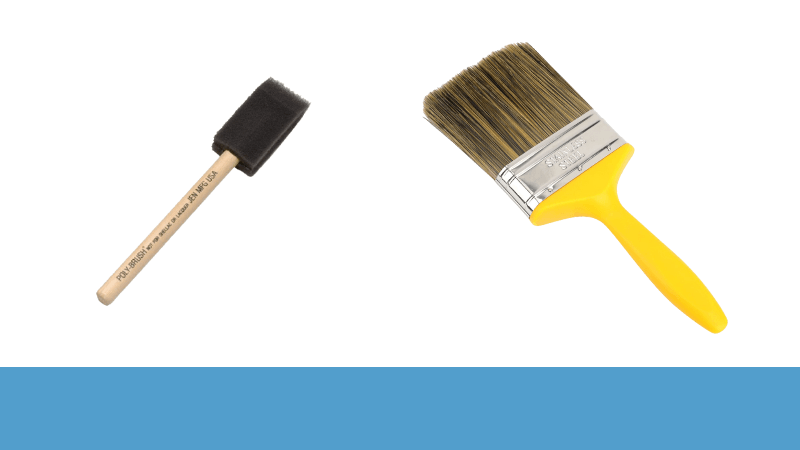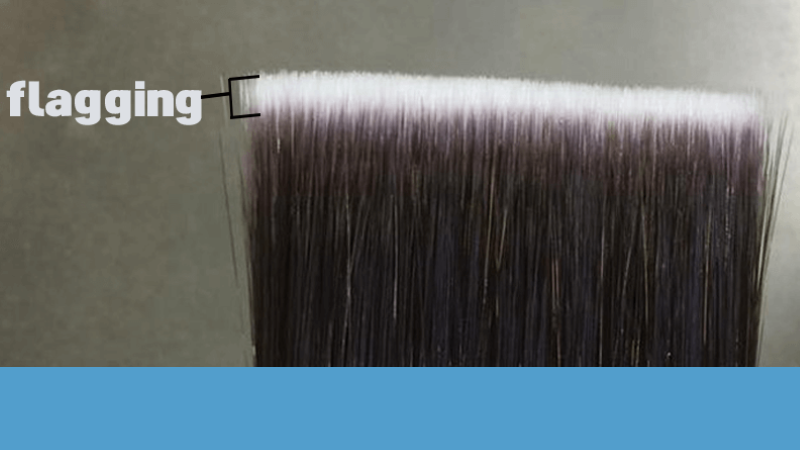Are you planning to use water-based polyurethane for your indoor project? While it’s a popular choice due to its low odor and quick drying times, it can be tricky to apply correctly. To apply correctly and have a successful finish job you need the right techniques, product, and applicator. In this article, we will go over the best water-based polyurethane applicators. Whether you’re working on a large floor or a small piece of furniture, we’ve got you covered. So let’s dive in!
How to pick a poly applicator
Selecting the right applicator for water-based polyurethane is crucial, and the type of project you’re working on should be your primary consideration. If you’re working on a large floor, using a roller or Tbar applicator is your best bet for achieving a smooth, even finish. But this is not to say that you cant polyurethane a floor with a brush. For big, flat surfaces, Tbars and rollers are typically preferred, while cabinets are often sprayed. On the other hand, if you’re working on smaller pieces or areas that require more precision and dexterity, brushes are the way to go.
Picking a brush for water-based polyurethane
A good quality brush holds more material and therefore saves you frequent replenishing. good quality brushes are also better at spreading the material more smoothly.
Types of Brushes

There are two types of brushes, foam brushes, and bristles. I tend to dislike foam brushes with poly as they are notorious for creating bubbles in the finish. They are however a good option when going for disposable brushes.
A synthetic brush is best for water-based polyurethane
There are two types of bristle brushes for applying water-based polyurethane: natural bristle brushes and synthetic bristle brushes. However, according to finish maestro Bob Flexner, natural bristle brushes are not suitable for water-based finishes. This is because natural bristles tend to soften and become uncontrollable when they come into contact with water, making them more suitable for use with solvent-based finishes instead. Therefore, synthetic bristle brushes are the best choice for applying water-based polyurethane.
3 qualities of a good brush
- Chisel shape- the brush should not be cut square at the end of the bristles
- Tapered bristle- Bristles should be fairly thin at the end than the top near the ferrule. The thickness near the ferrule makes the bristle more steady providing strength. On the other hand, the thin ends allow more bristles to come to contact with the surface providing a smoother finish.
- flagged bristle tips- each strand of bristle is split into several pieces. Flagging may double or triple the number of bristles at the end this means the brush can load more material and spread smoothly.

Best brush for water-based polyurethane
The 2" Minwax Polycrylic Wood Stain Brush is a high-quality brush for applying water-based polyurethane to small projects like furniture and carvings. The synthetic bristles of this brush, provide a high degree of control and steadiness during use. Additionally, the brush is flagged, resulting in a smoother and more even spread of the polyurethane. This is especially important when working on smaller, more detailed items that are not flat, as it helps to ensure that the finish is applied evenly and smoothly. Overall, if you are looking for a brush to use on smaller items with water-based polyurethane, the 2" Minwax Polycrylic Wood Stain Brush is an excellent choice
Best water-based poly brush for large flat surfaces
If you're looking for a reliable paintbrush for water-based finishes, the 4" Purdy Nylox Swan Paint Brush is a great option to consider. Its broad size of 4 inches makes it perfect for large surfaces such as floors and stairs that require a flawless finish. One of the key features of this brush is its synthetic bristles, which are ideal for use with water-based polyurethane. The bristles are tapered and flagged, which allows for a smooth spread and steady control.
Picking tbars and rollers
To achieve a uniform finish on large surfaces, it’s recommended to use a wider applicator, such as a roller or T-bar. This is because once you begin applying the polyurethane to the floor, it will start to dry immediately. Therefore, it’s important to complete the entire coat within a similar bracket of drying time. This allows for easier sanding and the ability to apply subsequent coats in a timely manner, without causing any visible overlaps or inconsistencies in the finish.
Spray systems
To achieve the highest quality finish, spray systems are the way to go. Although they are not as widely used due to their higher setup cost, the benefits of their application make them a preferred choice for many professionals. With spray systems, the turnaround time for finishing projects is unmatched as the drying times are only a fraction of other techniques. However, this technique requires additional equipment and can be more expensive. Therefore, it’s recommended to choose to spray if you plan to do regular finishing jobs, especially in cabinetry.
Also Check out: Avoiding common problems when wiping poly
Key takeaways: Water-based polyurethane applicators
- Selecting the right applicator for water-based polyurethane is crucial, and the type of project you’re working on should be your primary consideration.
- For large flat surfaces, T-bars and rollers are typically preferred, while cabinets are often sprayed.
- If you’re working on smaller pieces or areas that require more precision and dexterity, brushes are the way to go.
- Synthetic bristle brushes are the best choice for applying water-based polyurethane.
- A good quality brush has a chisel shape, tapered bristles, and flagged bristle tips.
- To achieve a uniform finish on large surfaces, it’s recommended to use a wider applicator, such as a roller or T-bar.
- Spray systems are the way to go for achieving the highest quality finish, but they require additional equipment and can be more expensive.

